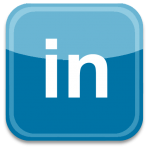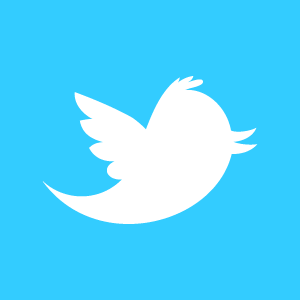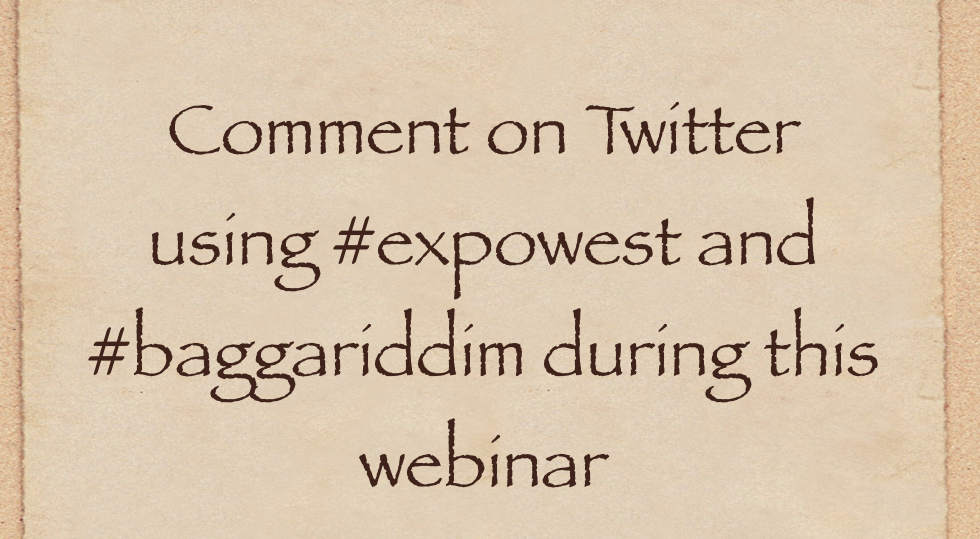Social Networking and your Tradeshow
Thought I’d give a shout-out to Northwest Creative Imaging in Gig Harbor, Washington – and many thanks, too – for creating this awesome tradeshow / social media info-graphic.

Thought I’d give a shout-out to Northwest Creative Imaging in Gig Harbor, Washington – and many thanks, too – for creating this awesome tradeshow / social media info-graphic.

Reflecting on the week I spent in Las Vegas and Anaheim in early March…

LinkedIn: Hang out on the show’s group page and join discussions. Ask and answer questions. Lightly reach out to people – which means no sales pitches – and look to learn booth numbers from exhibitors, sessions they’ll attend and other information. Reach out to speakers if they’re someone you’d like to connect with.

Twitter: find the #hashtag and spend time leading up to the show to track the conversation about the show. Take notes. Create a spreadsheet of the booth numbers and Twitter handles of the tweeters. Then you can target the specific individual by using the @ preface to get their attention (don’t send spam – make sure it’s relevant to what they’re already talking about, or lightly introduce a new topic).

Facebook: Check the show page – most established shows have one. If not, you might at least create an event listing and invite targeted people. Scan the show page wall and chances are you’ll find a lot of people that are actively involved. Again, make a spreadsheet. Connect with them, follow or like them and if appropriate, respond to their posts with a comment or question. Post something relevant on the show wall. Make friends.
Over time you’ll find you have a large targeted social media group that recognizes you, finds you engaging and sees the cool things you do. And you earned all this by not being annoying, by not spamming, by helping out and by offering value.
No, not the kind of engagement where you have to buy the girl a nice diamond ring that costs three months salary and leads to you saying “I do” in front of hundreds of people. We’re talking social media engagement, the kind that starts when you post something interesting on your Twitter or Facebook profile and people share it because they liked it so much.

So what does it take to be good at social media engagement?
Bottom line: what is interesting? If you find something interesting, chances are that someone else will find it interesting, too. While it’s a simple concept, like many simple things, the actual implementation of ‘being interesting enough to re-tweet’ is harder than it sounds.
First, you have to know your audience. What kinds of people are following you? Or more importantly, what kind of people do you want to follow you? Because if you push out some really fun and engaging tweets, they’ll get re-tweeted and you’ll continue to pick up more followers – the kind that like your type of tweets!
Second, you have to be able to articulate in a very short space what you like and what you find engaging and interesting. That may mean sending links out with your tweets or Facebook posts – which is certainly okay; after all, those longer form posts just won’t fit in a tweet – but when you send out a link, realize that you’re doing the same as 90% of all the other people tweeting. Most are sharing links. Can you create a tweet that stands on its own without a link and is still fun and engaging, or clever? If you can do that, and leave some space for someone’s Twitter handle, chances go up that it’ll get re-tweeted over and over.
If you’re paying attention to the kinds of posts and tweets that get shared again and again, and you are able to create similar posts, you’ll find that your audience is engaging with you.
Admittedly, doing this is not the easiest thing in the world to do for most of us. We are in awe of those people that seemingly invent clever tweets in a moment’s time that relates to something in the news. So, pick your moments. When you find something that is interesting to you, think about what interests you about it. What makes it interesting? Can you put your thoughts or observations into a short, pithy tweet? Can you find a new twist on it? Even if it’s not perfect, get it out there.
Find out what your community is interested in and then be interesting to them.
That’s how to get more followers that can’t wait to read what you’re up to today. That’s the art of engagement.

photo credit: katelyn.marie.photography
If you’ve been on Twitter a bit but still are confused about how hashtags are, and can, be used, hopefully we can take a bit of the mystery out of hashtags and give you some good ways to use them in conjunction with your event and tradeshow marketing.
First, what exactly is a hashtag?
Simply put, it’s the ‘pound’ or ‘number’ sign with a word or phrase after it: #jumpstart. This makes it easily trackable and searchable on Twitter or other platforms such as Hootsuite.com. You can use it with a two or three word phrase, but make sure there is no space between the words, like this: #tweetmetoday

Use it when you tweet about a specific or general topic, such as #eventprofs when your tweet is related to the event profession. If you are tweeting about a specific event, use a hashtag that would commonly be used for that event, such as #expowest for the Natural Products Expo West show, held every March in Anaheim.
So if you’re tweeting out about your booth, just make sure to include that particular hashtag: “Hey, join us at booth 3029 at #expowest and check out the new eco-friendly shoes!”
That way, anyone who is tracking the show hashtag will be able to find it (Twitter will show search results starting with the most recent).
If you’re tweeting about something you or your company is doing at the show after hours, such as a client dinner, you might consider using the hashtag so that anyone following along can see how you’re involved: “Having a great dinner with the cool people from Bagga Riddim here at Joe’s Pizza! #expowest”
Whether you want to tell the world that you’re meeting a client is up to you, but in my mind in most cases there is nothing wrong with it. In fact it could be seen as good branding. Not only are you getting your name out there again, you’re getting it out there in connection with a client and a location. If you use Foursquare to check in, the location will be mentioned, so all you have to do it include the hashtag in the tweet.
Let’s say the show is still a couple of months away, and you’re planning a webinar to promote your appearance (see this week’s earlier post about using webinars to promote tradeshows). You’ve got a new product to promote; you have one of the company management or marketing people on board to be a guest on the webinar. At the beginning of the webinar, include a slide that invites people to offer their comments on twitter. My suggestion is to use two hashtags: one that references the show and one that references your company:

This invites people to watch the webinar and relay their comments to their Twitter followers. Anyone who happens to be searching for that particular hashtag at that time will likely run across your webinar, which exposes you to even more people. Before the webinar you can promote it through your normal channels, but be sure to let your Facebook and Twitter followers know about it, too, and include links to the registration page.
Of course this same tactic can be used during your live presentation at the tradeshow or conference if you’re a speaker or presenter. The upside is that it can really help engage people, learn new things from them, take questions and promote interactivity. The downside is that if the presentation is going badly, you have no control over the conversation and may see some negative or snarky comments show up.
Another way to use Twitter is to hold a chat about a specific topic or subject. There are popular Twitter chats held regularly that discuss everything from marketing to industrial metal production. All you have to do is promote it through your normal channels, and through your Twitter account:
Join us for a chat about how to use drums to heal your soul: Thursday at noon ET; follow hashtag #baggariddim
If you have a guest on the chat, set up a handful of questions before hand that she’s familiar with. When the time arrives, welcome everyone to the chat and include the hashtag. People will follow along on the chat by simply searching for the hashtag in the Twitter search box. Invite anyone to submit questions and comments as the chat goes on. Schedule the chat with specific start and stop times (noon – 1pm, for instance), and stick to it. After the chat is over, archive the posts so that you can reference then in the future if need be.
Twitter is an extremely useful and flexible tool for instant communication anywhere, anytime. From the show floor, from your office, from the subway. It doesn’t matter, all a person needs is internet access and they’re on board.
What ideas can you come up with to use Twitter to effectively promote your tradeshow appearance or new product?


Be there. Your company’s products and services and brand may appear impersonal to your followers, but the people that work at the company (including you) are not: they’re real people. Be available as a real person and you may be seen as the spirit or soul of the company.

Put a ‘like’ button on your website. Install a FB widget.
It’s not hard to build a Twitter following. Just click ‘n’ follow and a majority of those that you follow will follow you right back.
But to build a following that can actually help you takes a little more thought – and probably a little more time.
First, determine WHO you want to follow you and WHY. Do you want to network? Find buyers for your product? Readers for your blog? New prospects that can find you at the next tradeshow in their area? If you can answer those questions with some confidence, you’re on the right path.

Next, how do you FIND those people? Keep in mind; you’re following PEOPLE, not COMPANIES. Yes, there are a lot of companies with Twitter accounts, but that doesn’t mean they’re worthwhile to follow. You might try and find specific people to follow that are interesting or worthwhile on some basis.
Next, how do you FIND them? Try keywords and hashtags. In the event industry, for example, the hashtag “#eventprofs” is used frequently. Typically hashtags are something you’ll just stumble on, so keep an eye out for them. Search for keywords related to companies, products or services in your industry, as well as recognizable names.
You can also find links to Twitterers on websites and blogs. Know someone in your industry that has a good online presence, such as a blog, a YouTube channel or on LinkedIn? Chances are you’ll find a Twitter link somewhere. In fact, if you’re active in a LinkedIn group, put up a post asking people to share their Twitter handles – a great way to follow dozens or hundreds of folks in the same interest group.
To determine if a Tweeter is worth following, check out their Twitter stream. Read their last few posts. Are they interesting? Do they link to worthwhile articles or blog posts? Do they have insight? Are their tweets frequent, or is the last tweet from 2010?
Now that you’re building your following, its’ time to INTERACT with them. Do you see a tweet that you like? Reply to them with a comment. Does the person look interesting – do they work for a company you’re familiar with, or is there some other connection? Don’t be shy about picking up the phone. That’s how I’ve met and connected with and become friends with people on Twitter. Reach out to them. You won’t hit if off with everybody – but if you are consistent, you’ll find a few great folks that you’ll become good friends with.
As you build your Twitter following, you’ll continue to find more value in those people and what they share. And if you want them to see you as a valuable tweeter, do your best to share valuable insight, links and thoughts via your Twitter account.
There has been a fundamental change in the way we connect with people for personal and business reasons. Have you noticed? It’s nothing we can control, and I’d wager we’re just seeing the beginning of the changes. Your best bet is to educate yourself, get started in social media (if you haven’t already) and start wading in. Eventually you’ll hit the deep end of the pool.
The question is: will you merely tread water, swim like a champion, or drown?

The new normal isn’t the old normal. Not only are the changes happening now, the pace of those changes is increasing. Does that make you upset, anxious and ready to crawl into a fetal position? I know it does for some people! When we don’t understand something, we as humans will often run from it. We’ll resist with all of our strength. We spend time thinking of what life must have been like in the Fifties, when business relationships were largely personal. When you went to the corner hardware store to solve a problem, you talked with the owner or manager, who was an old friend.
Maybe we fondly recall the technology of the 70s and 80s when fax machines, mass advertising and large-scale marketing were used by almost everyone. It may have been impersonal, but at least the changes were slow enough to assimilate.
Often we find ourselves wishing that the pace of technological acceleration was the same now as it was then.
But no. You’d be wrong. Those days are gone. Long gone. And they ain’t comin’ back.
Soooooo…what to do?
There is a small sign that hangs on my studio wall that reads “Start Now. Begin Anywhere.” It is a reminder that no matter where you start, it is better than not starting. So if it means setting up your first Twitter account, or posting a few tentative photos to Flickr, or seeing what it takes to start a YouTube channel, get going. You don’t have much time. Your competitors are saying the same thing: where do we start and what do we do?
I talked with a marketing person from a large multi-national company recently, whose corporate leaders still insist on ‘no social media’ in their world. As if it didn’t exist. As if by ignoring social media, it will go away.
Trust me, it won’t. They will lose ground, sometimes slowly, sometimes quickly, but believe me; they will lose ground against their competitors who are moving into the world of social media. Ignoring the sea change will get you swamped.
As someone who swims in the social media sea on a daily basis, I have to occasional step back and realize that not everybody is doing the same I am. Companies still struggle with the changes. Even companies who appear to be happily involved in social media with Facebook pages, Twitter accounts, YouTube Channels and LinkedIn pages find themselves puzzled by what they’re doing – and what they SHOULD be doing.
It’s a challenge – and it should be. Significant changes to the status quo are often hard to take. But if you realize that everyone else is going through the same thing, that makes it easier.
To begin – if that’s where you’re at – take a few steps, measure the results and your ability to interact with those tools, and do it again. And again. And again. It’s just a matter to getting used to it.
At your next tradeshow, for instance, plan on tweeting out or posting on Facebook whenever the opportunity arises. Take photos of clients and post them (ask permission first). Tweet out any special deals you have. Ask for feedback on new products or services. Check the response, make any adjustments you feel should be made – and do it again.
Give yourself permission to screw up – nobody really gets this stuff 100% right, anyway, so don’t feel you have to do this perfectly. Just get in the social media water and start splashing.

photo credit: Justin Ornellas
Instead of posting another Top Ten List, I thought I’d put it to video. Just a smidge over four minutes long. Enjoy!